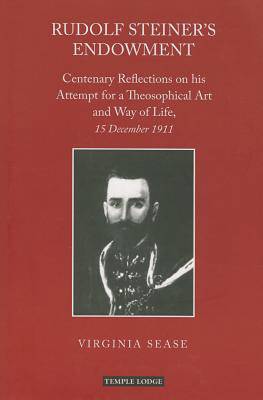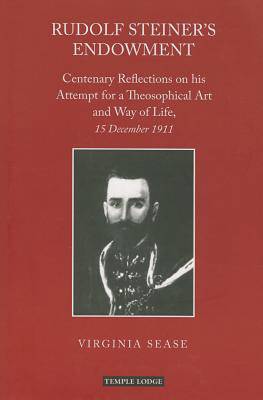
- Retrait gratuit dans votre magasin Club
- 7.000.000 titres dans notre catalogue
- Payer en toute sécurité
- Toujours un magasin près de chez vous
- Retrait gratuit dans votre magasin Club
- 7.000.000 titres dans notre catalogue
- Payer en toute sécurité
- Toujours un magasin près de chez vous
Rudolf Steiner's Endowment
Centenary Reflections on His Attempt for a Theosophical Art and Way of Life, 15 December 1911
Virginia SeaseDescription
Among Rudolf Steiner's many initiatives that evoked visible, sustained impulses, there was one that did not develop as planned--his so-called endowment of 1911. This was his attempt to create a "Society for a Theosophical Art and Way of Life" that would work "under the protectorate of Christian Rosenkreutz."
Steiner envisioned a collection of individuals who were "deeply moved by a spiritual power like the one that lived earlier in Christianity." By forming such a Society, he tried to enable a true spiritual culture to arise on Earth--a culture that would "engender artists in every domain of life."
Virginia Sease's reflections--a century after Steiner's attempt--emphasize especially three considerations. First, that the "endowment impulse" would allow us to experience the art of "interpreting" in the Rosicrucian way; second, that the best initiative--even one undertaken by a great individuality--is doomed to failure if the participants cannot overcome their personal ambitions; and third, that we may live with the fact that, despite the passage of time, the latent seeds in Steiner's attempt still have the possibility to reach fruition in the future.
Spécifications
Parties prenantes
- Auteur(s) :
- Editeur:
Contenu
- Nombre de pages :
- 112
- Langue:
- Anglais
Caractéristiques
- EAN:
- 9781906999407
- Date de parution :
- 18-01-13
- Format:
- Livre broché
- Format numérique:
- Trade paperback (VS)
- Dimensions :
- 155 mm x 231 mm
- Poids :
- 181 g







